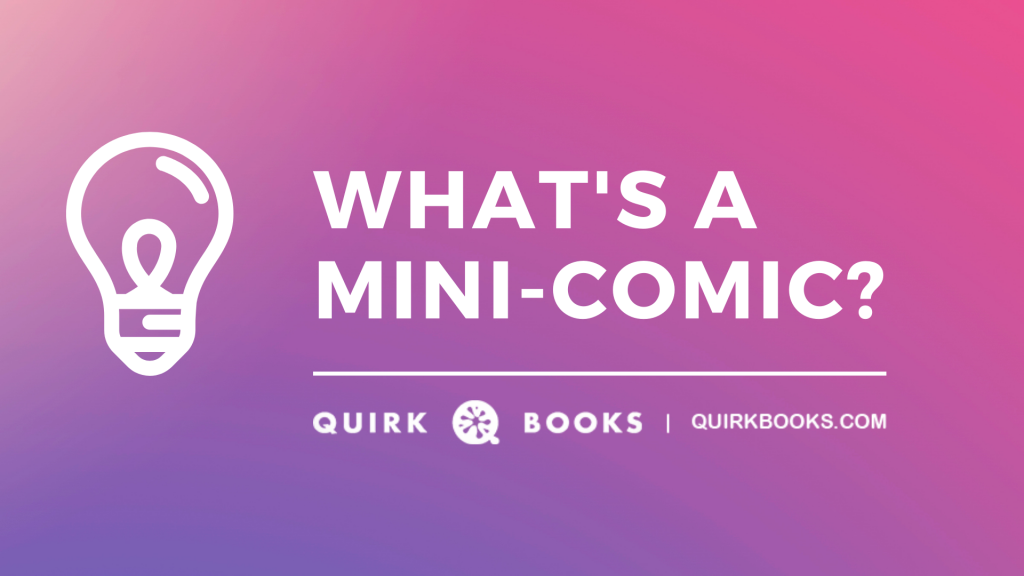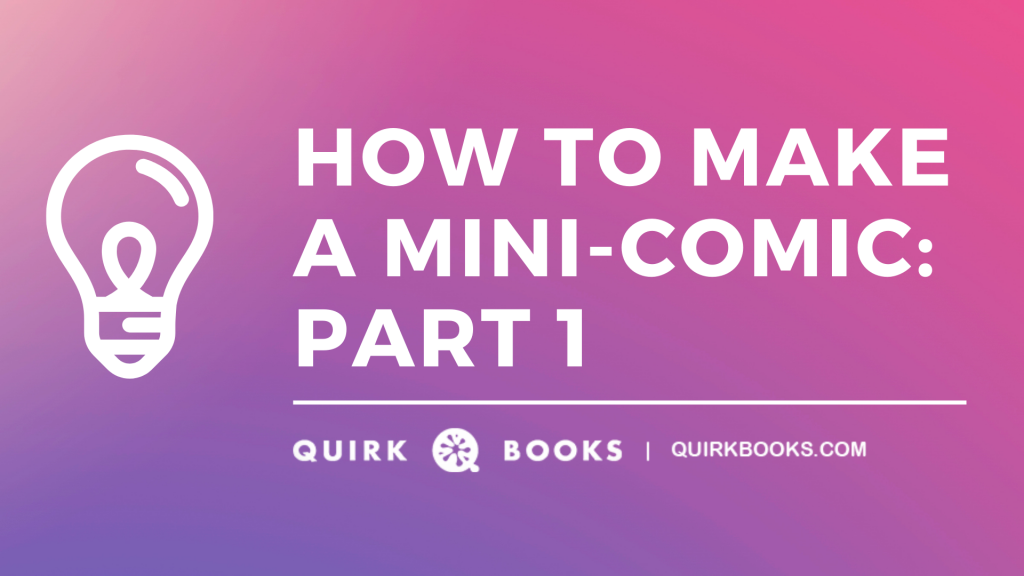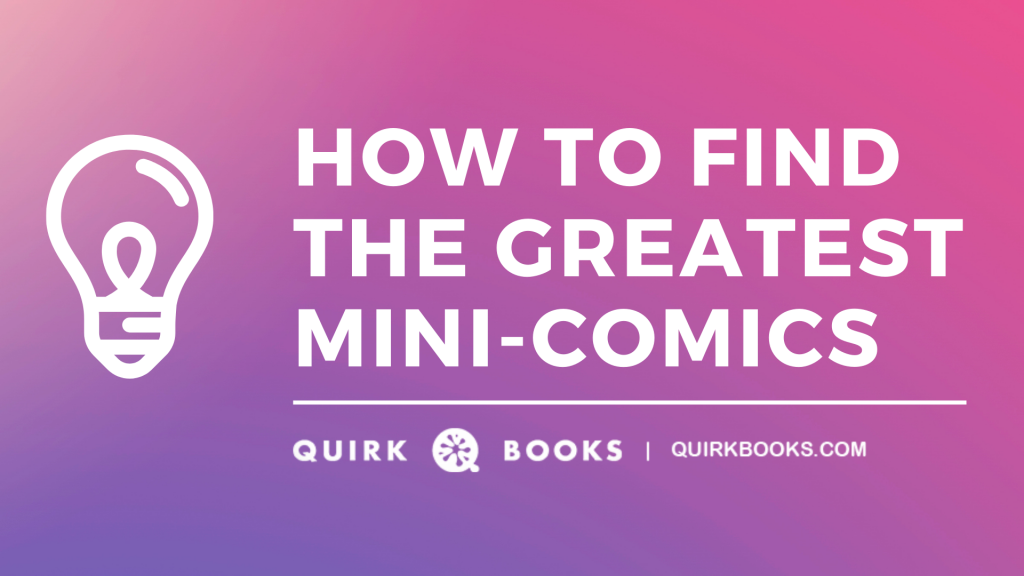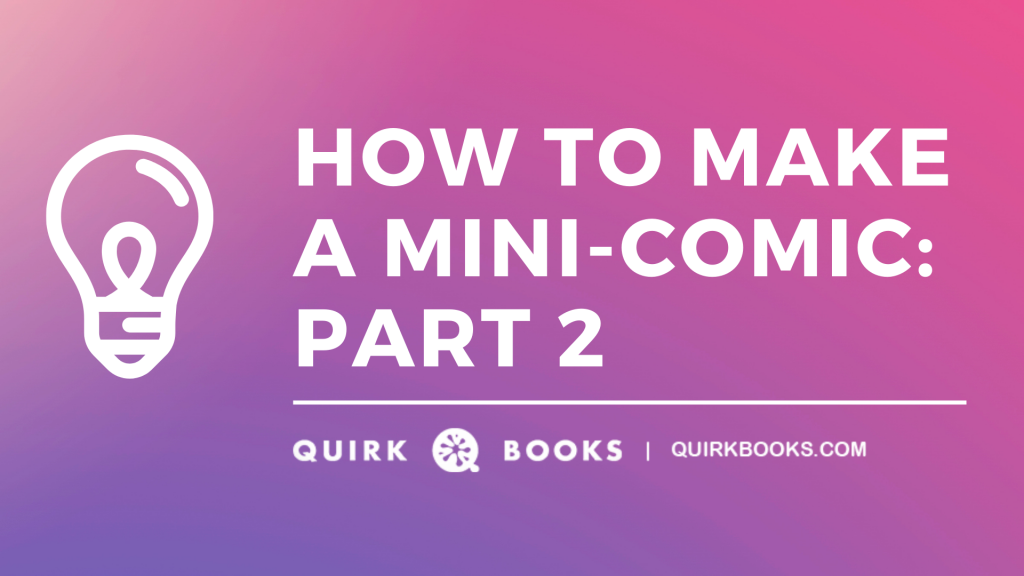What’s a Mini-Comic?
Here at Quirk Books we love comics. No duh. We even have a monthly Quirk Comics Club, when Quirk staffers meet over lunch for a show-and-tell of comics we’re buying, reading, and making. Check out our neat club pin:

We love comics of all sorts, from superhero books to indie memoirs to vintage newspaper strips to the weird artsy stuff to anything with cats in it. But there’s a special place in our heart for one particular comic book iteration: the mini-comic (a.k.a. mini comic or minicomic, but let’s go with mini-comic).
What is a mini-comic?
Don’t let the name fool you; a mini-comic doesn’t have to be small, as master of comics Jessica Abel points out. But very often they're mini in stature for practical reasons, because mini-comics are a favorite method for independent comics makers to self-produce, promote, and sell their work. Creators typically make mini-comics in small batches, usually reproducing them by means of photocopier or desktop publishing hardware. When you spot a mini-comic in the wild, it’s likely to be littler than a standard published comic (because paper costs add up), and it’s probably been folded, stapled and/or bound by hand (by the artist and whatever friends and family they can con into helping).
Exception: Welcome to the Pleasure Dome by Ian Sampson is not only a mega-sized mini-comic, it unfolds into a poster-sized final panel.
The Schulz Library, at the Center for Cartoon Studies in White River, Vermont, has upwards of 3,000 mini-comics in its collection. Their curators offer this definition:
A mini-comic is small, inexpensive, short-run comic, often handmade by the creator. Typically they are about half-letter in size, since that's easiest to produce, but our collection (known as the Zine Garden) includes mini-comics that are the size of a matchbook to huge 11×17 handmade books and everything in between.
“We don't have hard and fast criteria, there's a bit of ‘we know it when we see it,’ ” Schulz librarian Jarad Greene tells us. "But usually, it's folded and stapled/stitched by hand. Self-published, perfect bound books that don't have an ISBN are sometimes included as well.”
Why are mini-comics awesome?
For so many reasons!
For one thing, a mini-comic is like a unfiltered channel of creativity, direct from the cartoonist’s brain. There are precious few barriers to creating a mini-comic—if you have time, paper, drawing implements and an idea, you’re pretty much set. Comics artists and writers can use mini-comics to experiment with concepts that wouldn’t work in larger, longer, or traditionally-published formats. A mini-comic can run with a crazy idea that might be harder to sustain in full-length comic…and that goes not just for the story and art, but also size, shape, color, packaging, and production method. You can try almost anything in a minicomic.


Destination Earth, a mini-comic by Debbie Fong, includes a fold-out diary kept by the cat-astronaut protagonist.

Mini-comics can handle personal stories, like Kate McDonough's exploration of living with social anxiety, or simple concepts, like her documentation of bizarre items she encountered while working at a thrift shop.
They’re incredibly diverse. Mini-comics can be as appealingly simple or exquisitely complex as their creators decides to make them. Some minis are minimal, just line drawings on a folded sheet or paper. Others are like little jewels, with intricate art, creative packaging, unusual shapes and sizes, fancy bindings, and/or sophisticated printing techniques.
Mark Burrier's Show Off creates dark humor with simple line-drawings.
Rachel Bard's tiny mini-comic Come Back Soon , about as tall as a jumbo paper clip, comes with a teensier comic inside it. Her Growing Hope is printed in metallic gold ink on dark blue cardstock, and comes in a wrap-around band with a cutout in front.
They suggest a personal touch. Though they’re a reproduced medium, like all comics, many mini-comics havea hand-made quality that reminds you there’s a real person on the other end…someone who took the time to plan and print and cut and fold and staple and pack them. You can buy mini-comics at comic shows and chat with a creator who might go on to become famous (comic book famous, that is…but sometimes that's still pretty famous!). If you order a mini-comic online, you might get a hand-written thank you note with your purchase. Blockbuster comics and million-seller graphic novels are great, but minis remind us that comics are a vehicle for individual creativity at all levels, and can travel from creator's brain to reader's hands with fewer stops in between tham most media.
You've probably seen Tom Gauld's cartoons in The New York Times, The Guardian, and in his books published by Drawn & Quarterly. But he once published mini-comics through his own (now defunct) small press.
They’re cheap! Inexpensive, that is. There’s not much risk in spending a few bucks to sample the work of artists you’re not familiar with and bring their nutty ideas home with you. And at few bucks a pop, you can quickly build your own mini-comics library.
So we're agreed…mini-comics are awesome! But where does one find these insanely amazing treasues? Good question…check out our How to Find the Greatest Mini-Comics post for more details! If you're already dying to make your own comic, check out How to Make a Mini-Comic: Part 1, How to Make a Mini-Comic: Part 2, and Mini Comics: The Wrap-Up for ideas!
Mini-comics displayed are from the personal collections of Quirk Books Comics Club members and are intended as a small and subjective sampling of the ever-expanding universe of mini-comics.













